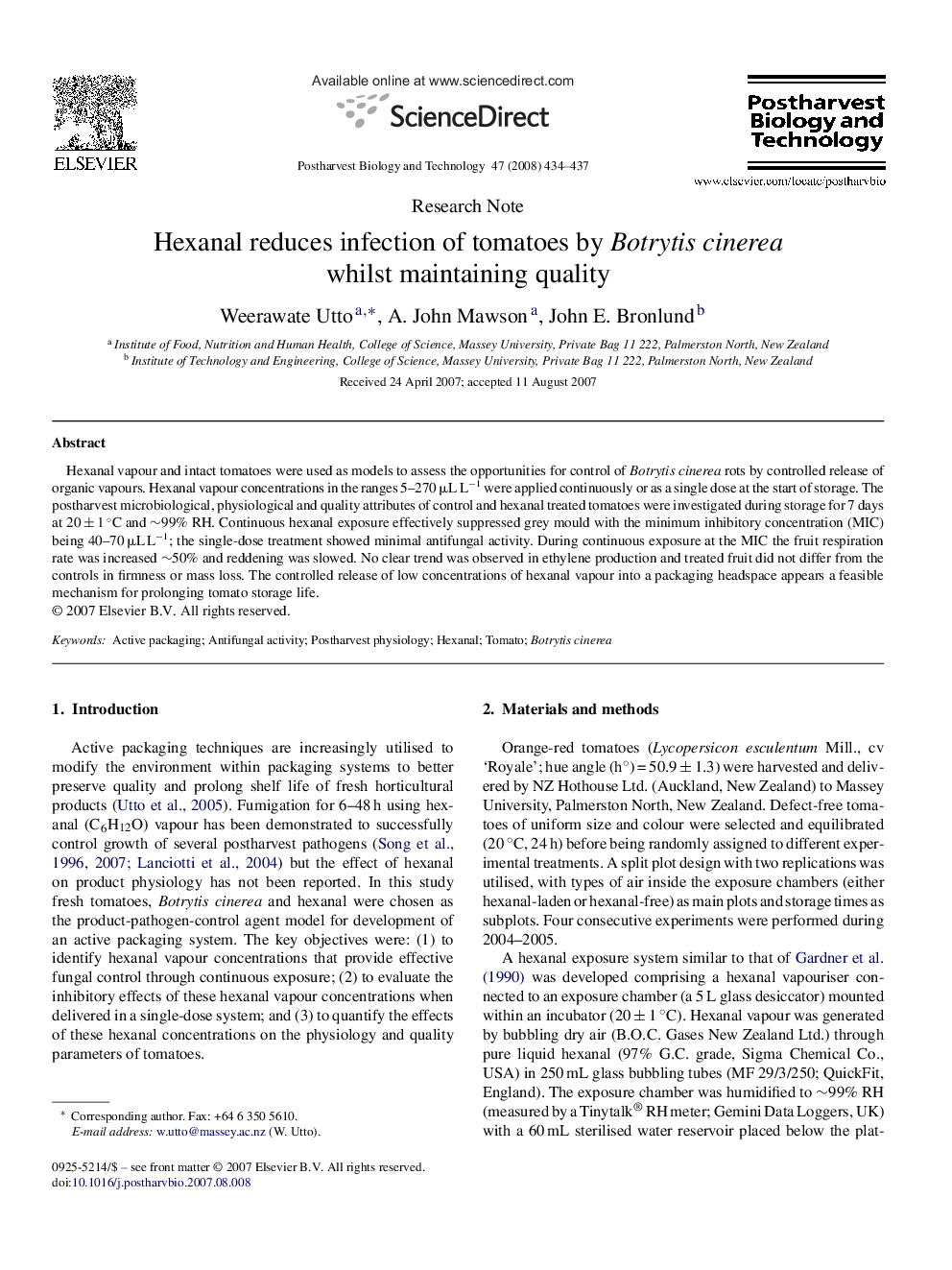| Article ID | Journal | Published Year | Pages | File Type |
|---|---|---|---|---|
| 4519750 | Postharvest Biology and Technology | 2008 | 4 Pages |
Hexanal vapour and intact tomatoes were used as models to assess the opportunities for control of Botrytis cinerea rots by controlled release of organic vapours. Hexanal vapour concentrations in the ranges 5–270 μL L−1 were applied continuously or as a single dose at the start of storage. The postharvest microbiological, physiological and quality attributes of control and hexanal treated tomatoes were investigated during storage for 7 days at 20 ± 1 °C and ∼99% RH. Continuous hexanal exposure effectively suppressed grey mould with the minimum inhibitory concentration (MIC) being 40–70 μL L−1; the single-dose treatment showed minimal antifungal activity. During continuous exposure at the MIC the fruit respiration rate was increased ∼50% and reddening was slowed. No clear trend was observed in ethylene production and treated fruit did not differ from the controls in firmness or mass loss. The controlled release of low concentrations of hexanal vapour into a packaging headspace appears a feasible mechanism for prolonging tomato storage life.
